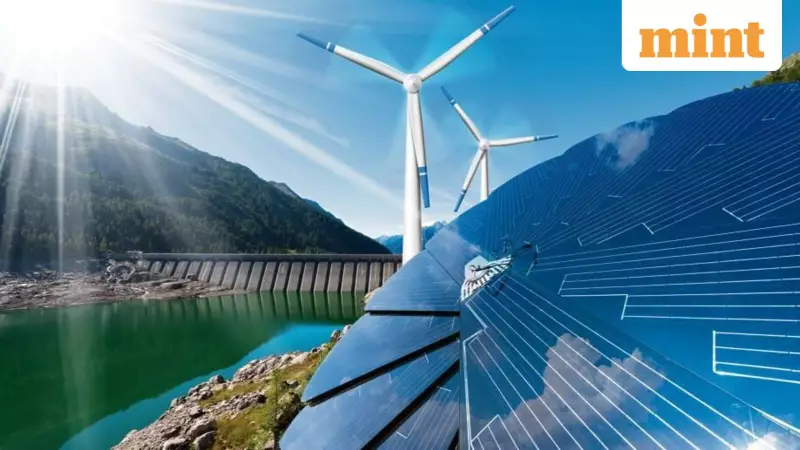
In recent months, a growing chorus of voices has suggested that climate action is a lost cause, arguing that since the Paris Agreement's ambitious targets appear unachievable, we should abandon our efforts altogether. However, a closer examination of nearly three decades of climate diplomacy reveals a very different story—one of remarkable progress and exceeded expectations.
The Contrarian Narrative Versus Historical Evidence
Prominent figures have recently advocated for scaling back climate ambitions. Energy historian Daniel Yergin argued in an April essay that a "pragmatic way forward" means accepting that the energy transition isn't happening. A think-tank established by former British Prime Minister Tony Blair labeled current climate goals as "unrealistic and therefore unworkable." Meanwhile, former President Donald Trump has famously dismissed climate action as a "con job" that should be abandoned.
Despite this pessimistic narrative, the historical record tells a different story. The Kyoto Protocol, signed in 1997, required industrialized nations to cut emissions by 5% below 1990 levels. Contrary to popular memory, this agreement was actually a resounding success, delivering a far deeper 22.6% reduction. The subsequent increase in global emissions during the 2000s resulted from countries that didn't participate in the protocol, not from those that did.
Exceeded Expectations Across Multiple Fronts
The European Union's climate commitments provide another compelling example. When the EU pledged under the 2015 Paris Agreement to cut emissions by 40% below 1990 levels by 2030, many critics expressed skepticism. Bjorn Lomborg, a long-time opponent of climate action, wrote in the Wall Street Journal that these promises "will fail to accomplish anything substantial to rein in climate change." Even the European Environment Agency projected in 2017 that the bloc would miss its target.
Instead, greenhouse pollution in the EU last year was already 37% below 1990 levels, and current trends suggest the union may achieve a 54% reduction—surpassing its original goal and nearly meeting a stricter target adopted in 2020. This pattern of exceeding expectations extends beyond Europe.
China's renewable energy progress demonstrates similar success. The country committed in 2020 to install 1,200 gigawatts of wind and solar power by 2030. By September of this year, it had already surpassed that target with more than 1,700 gigawatts connected to the grid. When President Xi Jinping announced a new goal of 3,600 gigawatts by 2035 in September, few questioned its feasibility—a marked change from previous skepticism.
Energy Transition Progress Defying Predictions
The International Energy Agency's projections further illustrate how climate action has consistently outperformed expectations. The amount of renewable electricity generated globally this year will be about 9% higher than what the IEA estimated in 2018 would be necessary to keep global warming below 2° Celsius.
Meanwhile, the IEA's Current Policies scenario—a fossil fuel-favouring model reintroduced this year after lobbying by the Trump administration—has proven remarkably inaccurate. This model overestimated 2025's oil demand by approximately 4.2 million barrels per day, equivalent to the entire output of Iraq, OPEC's second-largest producer. The same scenario underestimated this year's renewable energy production by 2,600 terawatt-hours, roughly equal to all electricity generated in the European Union.
The fundamental problem isn't that we fail to meet our climate objectives, but that persistent bad-faith nihilism encourages us to overlook the progress already achieved and lower our future ambitions. Global emissions continue to inch upward primarily because of nations that aren't making adequate climate promises at all, such as China's failure to set specific targets for reducing coal consumption or the recent dismantling of US climate measures.
Moving Closer to Critical Targets
The evidence of progress is measurable and significant. Five years ago, the most ambitious emission-reduction plans proposed by governments would have resulted in approximately 3° Celsius of global warming by the century's end. Today, we're facing about 2.3° Celsius of warming—still disastrous, but moving closer to the "well below 2°" target scientists say we must achieve.
The 2015 Paris Agreement, initially dismissed by some as a 'fraud' and 'dangerous incrementalism,' is demonstrating tangible results. As solar panels, wind turbines, electric vehicles, and rechargeable batteries rapidly transform global energy systems, the transition to clean energy stands on the brink of victory. The narrative of failure promoted by doomsayers ignores overwhelming evidence of success and threatens to undermine the critical momentum needed to complete this transition.





